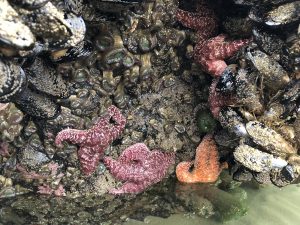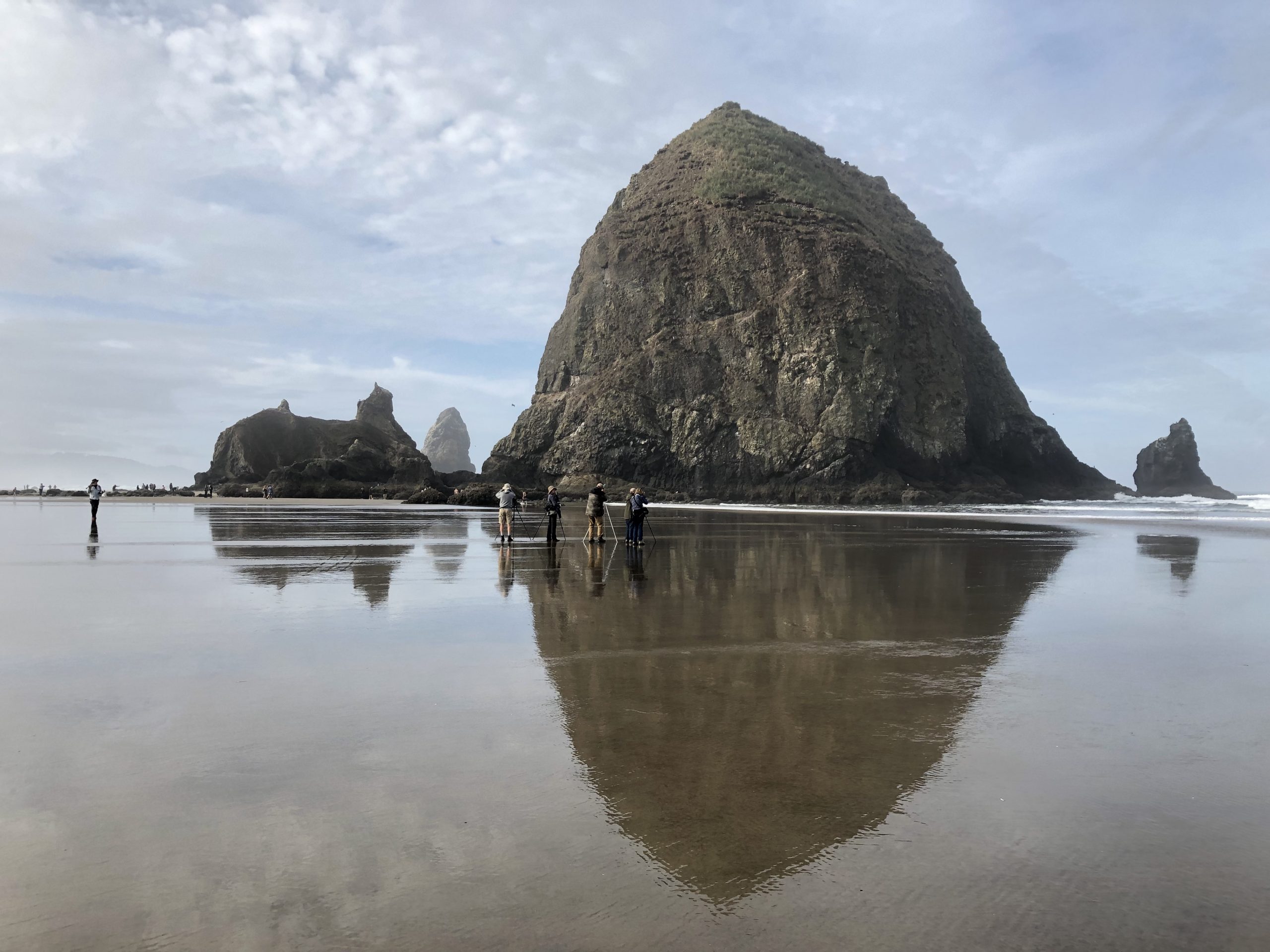Astoria, OR: Oregon’s north coast has some of the most beautiful and iconic rocky ocean shores in North America. Beloved Haystack Rock and Ecola State Park host important habitat for tidepool species such as sea stars and mussels that support complex ocean food webs. Charismatic and ecologically important bird species such as the Black Oystercatcher depend on tidepool areas for food. Upland rocky habitats are critical nesting places for five species of seabirds. Harbor seals and sea lions use secluded rocky areas as resting sites. Intertidal rocky habitats provide important nursery grounds for commercially important species like rockfish and Dungeness crab. Tidepool explorers seek out otherworldly intertidal animals and other visitors enjoy the scenic beauty of our rocky coastline, providing an economic boost to our region through tourism dollars.
Oregon’s Rocky Habitat Management Strategy is currently being updated by Department of Land Conservation and Development (DLCD) and a workgroup of stakeholders appointed by Ocean Policy Advisory Council (OPAC). The strategy seeks to balance ecological, social, and economic uses by setting out general principles and management prescriptions while also making site-specific designations of special rocky habitat areas. In the original 1994 Rocky Shores Management Strategy (it’s since been renamed), the following north coast sites got special designations:
·Haystack Rock is designated a Marine Garden, for education and conservation uses.
·The western end of Tillamook Head is a Habitat Refuge, an area needed to maintain the health of the ecosystem.
·The Ecola Point and Sea Lion Rocks area was flagged as needing more information before a designation could be made.
·Cape Falcon was not designated, but has since been protected as a State of Oregon Marine Reserve.

During 2020, the public will have the opportunity to propose additions, deletions, and revisions to special designations under the Rocky Habitat Management Strategy. “We have a golden opportunity to consider new protections to safeguard precious rocky habitats while at the same time balancing protection with responsible access for the public to enjoy and be inspired,” said Joe Liebezeit, Staff Scientist & Avian Conservation Manager at Portland Audubon.
The North Coast Rocky Habitat Coalition is a group that will be looking at our rocky coastline and making proposals under this process. Those who are interested in getting involved should contact Margaret Minnick at northcoastrockyhabitat@gmail.com or follow the group’s Facebook page, North Coast Rocky Habitats, at https://www.facebook.com/northcoastrockyhabitats/. The public can also comment on the State’s rocky habitat process. To find out more, visit https://www.oregonocean.info/index.php/tsp-rocky-shores-amendment.


.png)